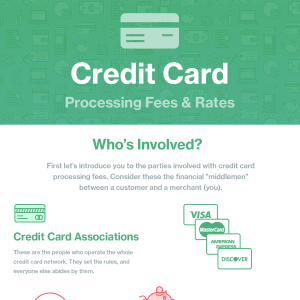Stripe Payments can be a great tool for tech-savvy nonprofits, particularly those that take most of their donations online.
Our content reflects the editorial opinions of our experts. While our site makes money through
referral partnerships, we only partner with companies that meet our standards for quality, as outlined in our independent
rating and scoring system.
The ability to take online donations at a reasonable cost can be a huge benefit to modern nonprofit organizations. Stripe for nonprofits offers a wealth of useful tools that 501(c)(3) organizations can use to reach donors. Even better, Stripe for nonprofits comes at a discounted transaction rate.
Below, we’ll cover how much Stripe costs for nonprofits, what it offers, and how your organization can utilize Stripe’s nonprofit features. Is Stripe the best credit card processing company for your nonprofit? Read on.
What Is Stripe For Nonprofits?
Stripe (read our review) offers qualifying nonprofit organizations a 0.7% discounted rate on transactions. To qualify, you must have 501(c)(3) status, and at least 80% of your donations must be processed through Stripe.
It should be noted that, unlike Stripe’s default transaction rate, Stripe fees for nonprofits don’t cover quite as many features. For most nonprofits, this shouldn’t be a big deal, but it’s worth noting that features like Stripe Radar may cost more should you choose to use them. Additionally, some transactions, like American Express, do not qualify for the discounted rate.
Stripe Nonprofit Pricing
Stripe doesn’t charge monthly fees for basic services. Instead, all costs for non-premium features are bundled into a flat-rate transaction cost. Here’s how it breaks down:
- Credit Card Transactions (except American Express): 2.2% + $0.30
- American Express Transactions: 3.5%
- ACH Transactions: 0.8% (max. $5)
Note that American Express transactions can actually be more expensive under the Stripe nonprofit pricing, so keep that in mind if your organization processes a lot of Amex transactions. You can get a full breakdown of additional fees for Stripe services in our guide to Stripe processing fees.
How To Create A Stripe Nonprofit Account
Stripe doesn’t have nonprofit accounts per se; you just apply for a nonprofit discount. This can add to some confusion because Stripe uses the base processing rate to determine what other features are included in your account. Here’s how you do that:
Step 1: Create a Stripe account
To get your nonprofit discount, first, you need to sign up for a Stripe account. The process is fairly straightforward: just follow the prompts.
We can help you navigate the Stripe sign-up process if you need it.
Step 2: Gather supporting documentation
To qualify for Stripe fees for nonprofits, you’ll need to show that at least 80% of your transactions will be tax-deductible donations. You can still use Stripe for other organization-related purposes, but the lion’s share of your processing must qualify.
Non-eligible donations include membership fees, tuition payments, ticket sales, registration fees, and auction payments.
Step 3: Apply for your nonprofit discount
Next, you’ll need to prove to Stripe that your organization qualifies for your discount.
First, you’ll need proof of your 501(c)(3) status. Your EIN or a letter from the IRS is sufficient.
You’ll submit these, as well as the information you gathered in Step 2, by email to [email protected]
How To Use Stripe For Nonprofits To Improve Your Donations & Fundraising
Stripe’s discounted nonprofit fees are nice, but you may be wondering how well the Stripe platform can meet the infrastructural needs of 501(c)(3) companies. The good news is that Stripe is a very customizable platform, although whipping it into the exact shape you want may take some technical skills or carefully selected integrations.
Create Custom Donation Forms With Stripe Elements
Stripe Elements can save you the trouble of creating your own UI assets while still giving your donation forms a feel that’s particular to your nonprofit.
Stripe Elements is a feature of the Stripe.js library. There’s also a mobile version available called Mobile Native Elements for Stripe’s mobile SDKs. Each prebuilt element is made to tokenize sensitive information. You can customize payment elements, buttons, and card elements.
Stripe Elements supports 18 payment methods with no additional integrations.
Launch Donations Quickly With Ready-Made Stripe Checkout
If you don’t want to go through all the trouble of implementing Stripe Elements, you have an alternative in Stripe Checkout.
Stripe Checkout is a premade, hosted payment page that offers convenient features, such as one-click payments, CAPTCHAs, and address autocomplete. It’s built with responsive elements, so it should work well on both desktop and mobile devices. You’ll still need to do a little coding to get it up and running, but the actual design elements are handled for you.
To enable donations in Stripe Checkout:
- Enable Stripe Checkout through your Stripe Dashboard.
- Add donation amounts to your Dashboard as though you were adding products.
- Create donation and thank you pages on your website.
- Integrate Checkout into your donation page.
Connect Stripe Payments With Other Nonprofit Software
Stripe’s a big enough name in the payment processing world to be supported by a vast library of integrations for project management, bookkeeping, marketing, and niche payments. Additionally, Stripe’s powerful API makes it possible to design your own should you not find a ready-made solution.
Notable integrations include:
- Mailchimp
- Zoho Subscriptions
- Paid Member Subscriptions
- Buy Me A Coffee
- Donorbox
Set Up Recurring Donations With Stripe
Stripe supports recurring payments. You can implement these directly in Stripe or by using a nonprofit-focused integration that supports recurring donations through Stripe. Recurring payments have an additional fee of 0.5%-0.8% depending on whether you want the Starter plan or the Scale plan. Scale comes with all of Starter’s features plus Stripe Connector for NetSuite and the ability to give customers quotes prior to subscription.
Stripe supports recurring payments through both stored credit information and ACH payments. In most cases, you’ll want to handle subscriptions with ACH payments, as they’re considerably cheaper to process.
Stripe Checkout allows customers to self-enroll into recurring payments and supports custom enrollment through your website.
Add To Your Bottom Line With An eCommerce Store
If your nonprofit sells merchandise, you’ll be happy to know that eCommerce is Stripe’s specialty. Stripe integrates with popular eCommerce platforms, such as WooCommerce, Zoho, and Magento.
Further, if you want to use Stripe as a white-label processor, eCommerce platforms such as Shopify can grant you access to Stripe without having to do any coding.
Manage Taxes, Reporting & Bookkeeping
If you prefer, Stripe can help you handle your taxes and bookkeeping through — you guessed it — Stripe Tax.
For an additional 0.5% per transaction (or 0.4% if you process over $100,000/month), Stripe Tax will collect all applicable sales taxes for you. If you’re doing business internationally, it can collect the appropriate local taxes or VAT. You can then file your taxes yourself or automatically through one of Stripe’s partners.
Utilize Stripe's 1099-K forms
A 1099-K form can help your organization report its taxes to the IRS.
Stripe provides these for accounts that process at least 200 transactions in a calendar year that collectively add up to $20,000 or more. The account also needs to belong to a US-based account or a US citizen.
Alternatives To Stripe For Nonprofits
If Stripe sounds a little too technical for your nonprofit, or it just doesn’t fit your money-raising strategy, there are alternatives.
- Square: If you’re looking for an alternative third-party processor, especially one that excels at handling in-person transactions, you may want to consider Square for nonprofits. Square doesn’t offer discounted rates, but it does come with a robust set of donation options and a powerful suite of business productivity software. Square charges 2.9%+$0.30 for online transactions and 2.6%+$0.10 for in-person transactions.
- PayPal: Perhaps the most similar competitor to Stripe, PayPal is an extremely popular third-party processor for nonprofits. Where Stripe is oriented toward customization and developers, PayPal is designed for ease of use and implementation. You’ll also be able to access PayPal’s massive ecosystem, which features peer-to-peer transaction support as well as eCommerce and in-person transactions through PayPal Zettle. Registered 501(c)(3) organizations are charged 1.99% + $0.49 for online transactions.
- Dharma Merchant Services: If you’re looking for a more stable option and don’t mind paying a monthly fee, you may want to consider Dharma Merchant Services. Dharma can set nonprofits up with a dedicated merchant account for $20/month. Dharma uses interchange-plus pricing for transactions rather than flat rates, making it a better fit for high-volume processing. Qualified nonprofits can get a discounted processing rate of interchange + 0.10% + $0.08 for in-person transactions and interchange + 0.10% + $0.11 for virtual transactions.
In Summary: Stripe For Nonprofits
Stripe Payments can be a great tool for tech-savvy nonprofits, particularly those that take most of their donations online. Stripe’s nonprofit discount is significant and competitive; just keep in mind that not all donations qualify for the discounted rate. You’ll also want to factor in the supplemental fees Stripe charges for advanced features; these can add up quickly.
Looking for more alternatives to Stripe for nonprofits? Check out our best credit card processors for nonprofits.
Looking for nonprofit-friendly credit cards? We can help with that too.











